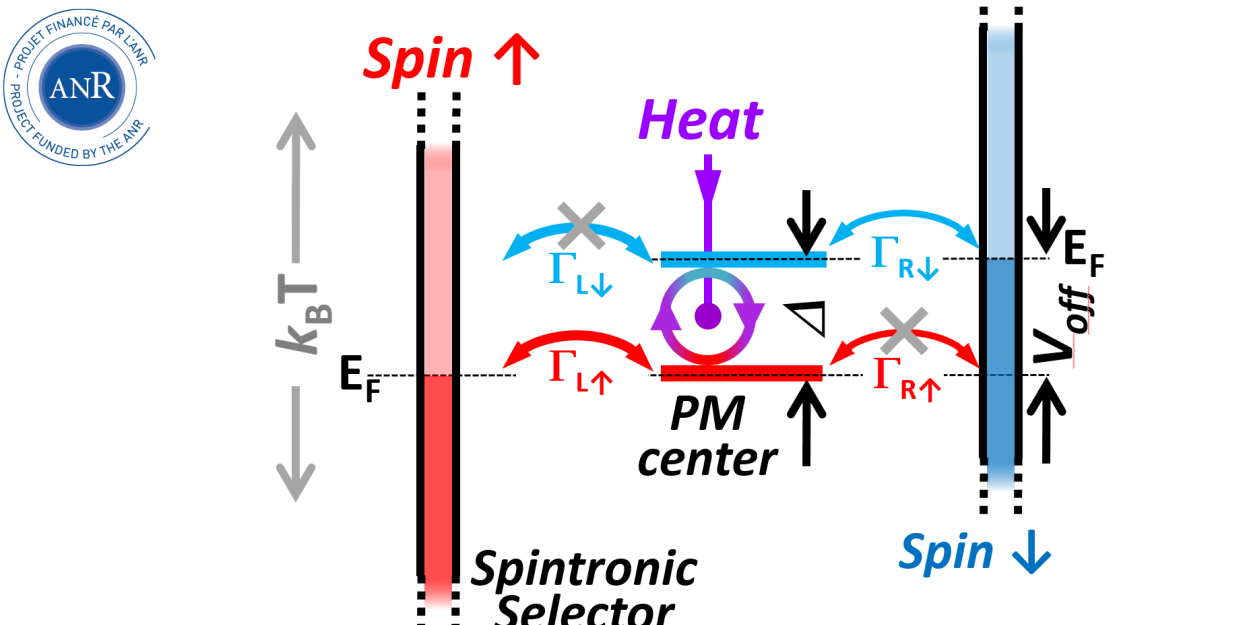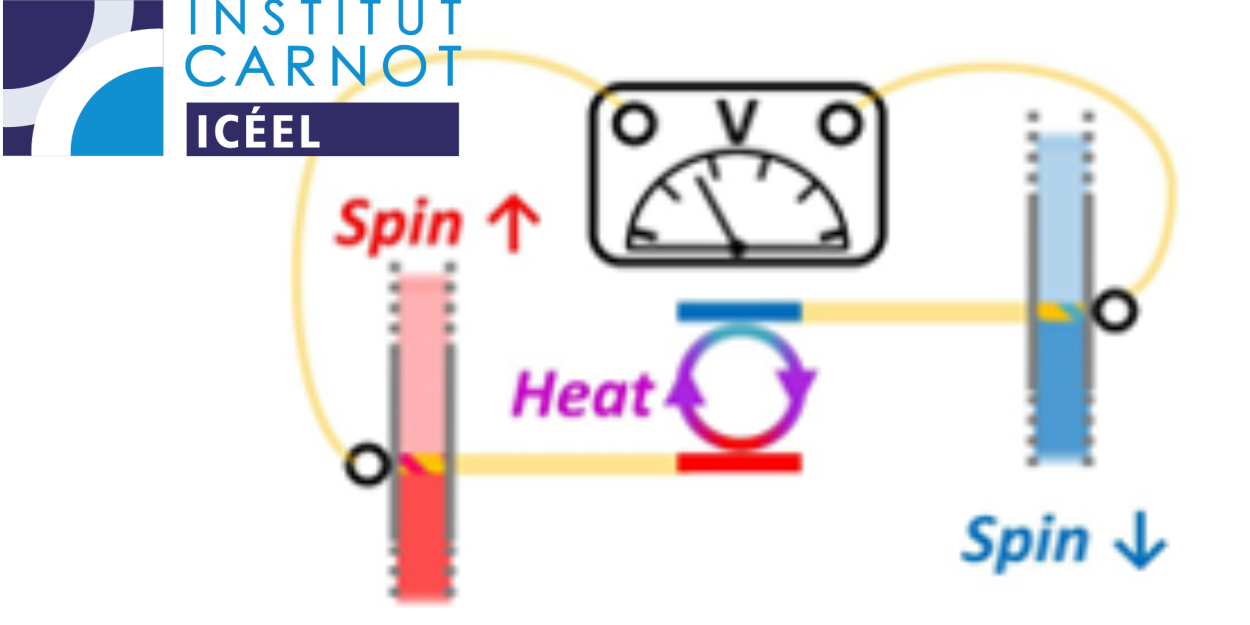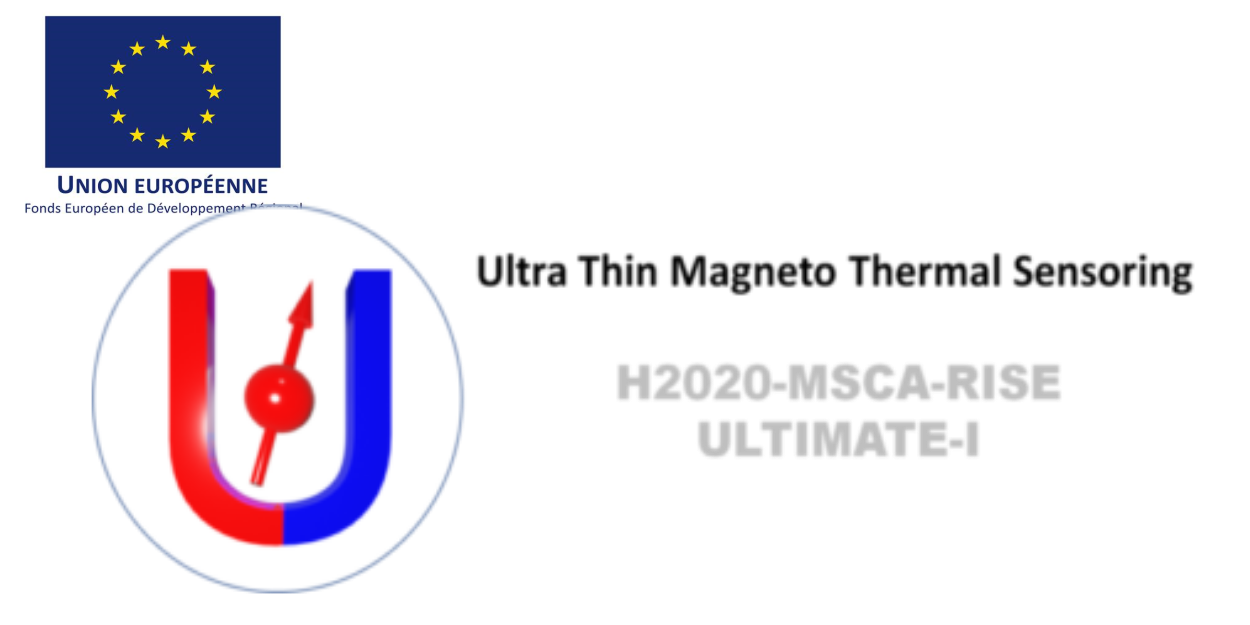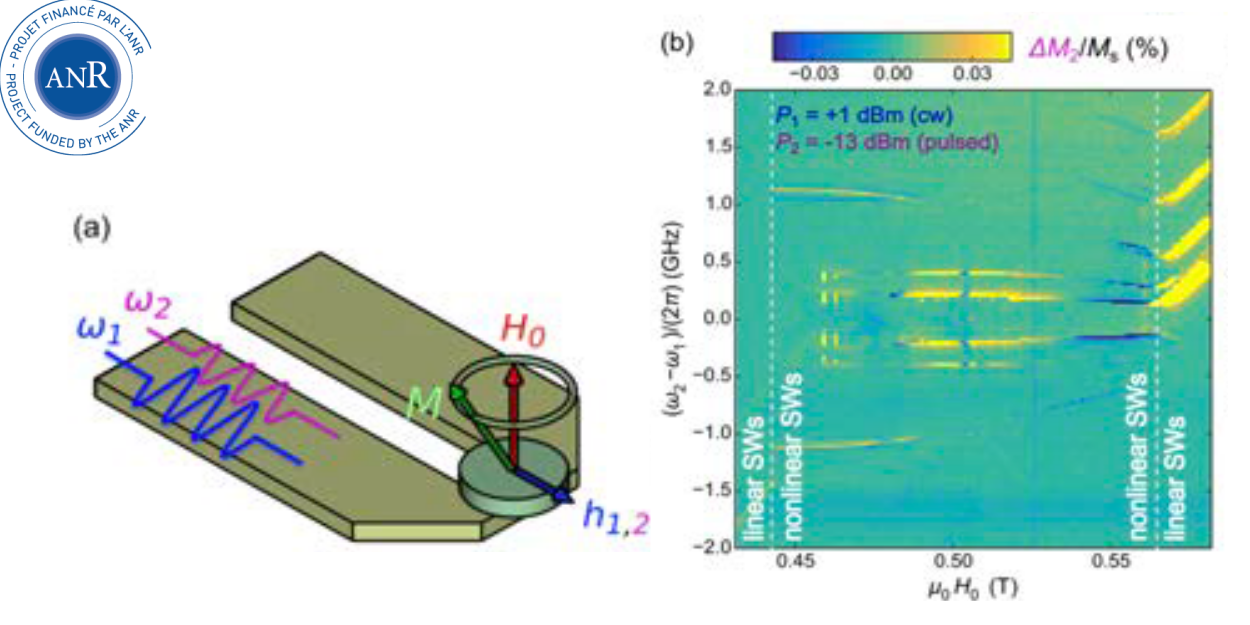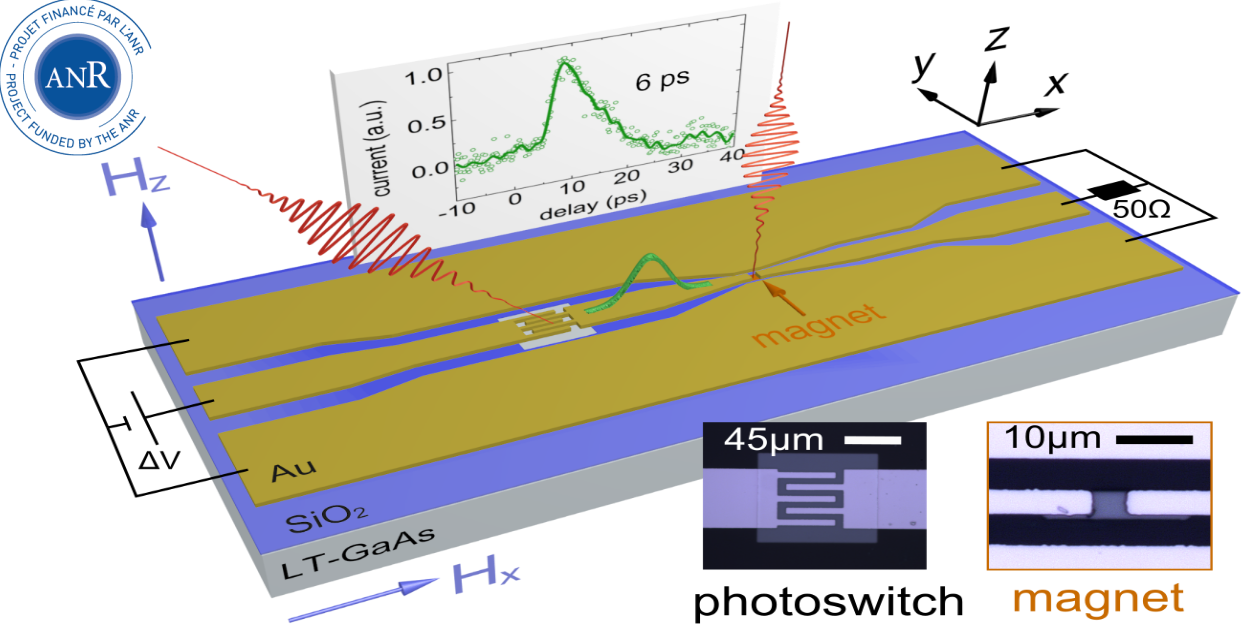Spintronics
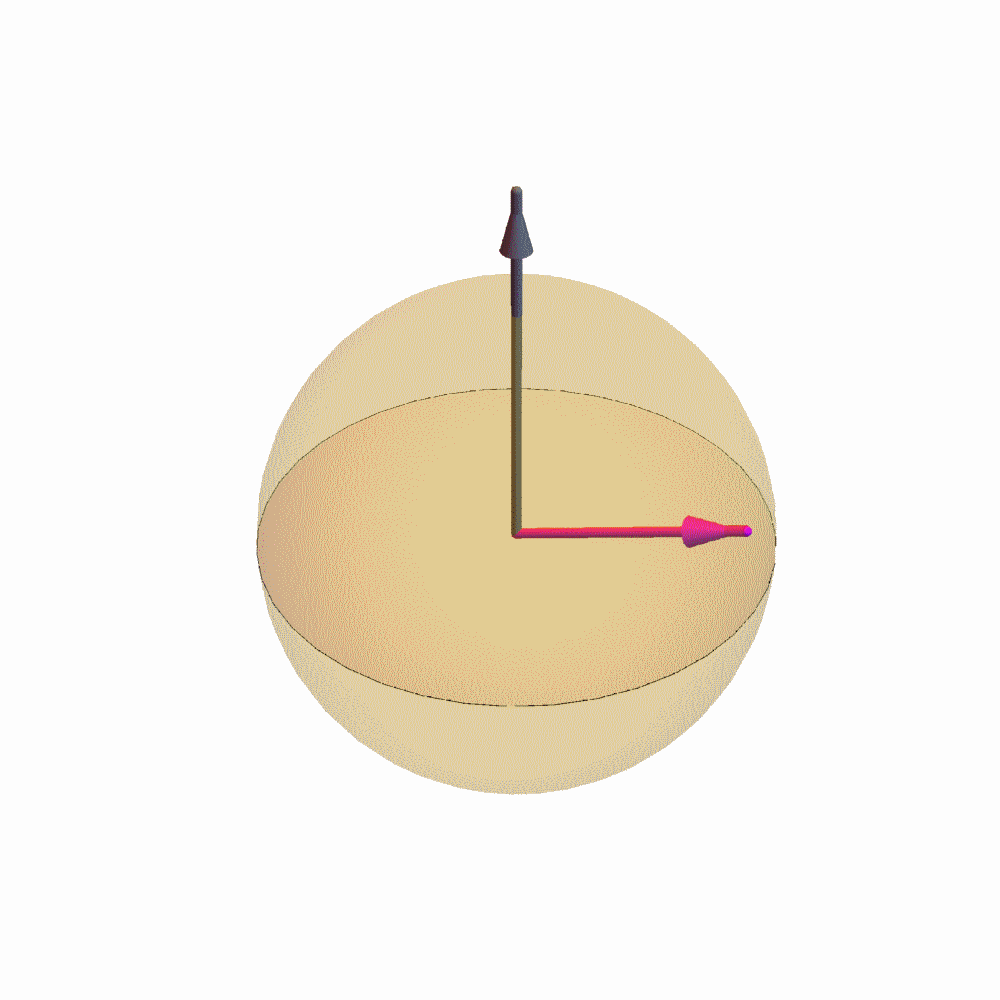
Overview
Using a specific property of the electron called spin, we study new electron transport properties which allow many advances in applications such as sensors, magnetic oscillators, tunnel junctions or spin valves. For the past few years, the team has been interested in the effect of spin-orbit interaction on the creation of spin currents and the dynamics of the associated magnetization.
Research Interests
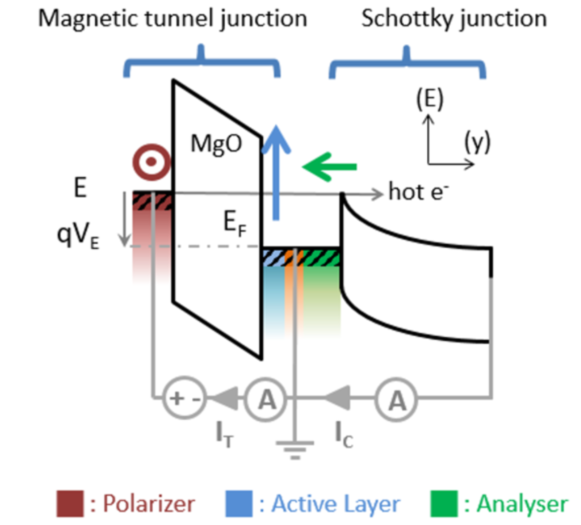
Spin Precession
Power generation
The team is working in collaboration with colleagues from IPCMS on «Spin-driven electrical power generation at room temperature » using magnetic tunnel junctions. Experiments and analyses show that it is possible to assemble an electrical generator that utilizes the electron spin to harvest thermal fluctuations at room temperature. Referring to the engine’s schematic, the harvesting of ambient temperature occurs over paramagnetic (PM) centers —- atom-level magnets whose orientation fluctuates due to heat. The engine’s electrodes, called spintronic selectors, allow electrons of only one spin (↑ in red, or ↓ in blue) to conduct.

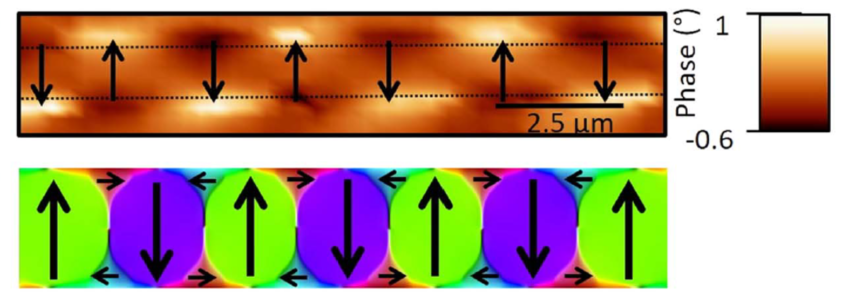
Magneto resistive SAW Sensor
The team has a long experience in the development of prototype magnetic field sensors. AMR, GMR, TMR sensors have been developed and more recently magnetic surface acoustic waves wireless sensors. The know-how of the team in thin film material science and nanotechnology nanofabrication is the key to adapt the sensor geometry to a specific application.T
